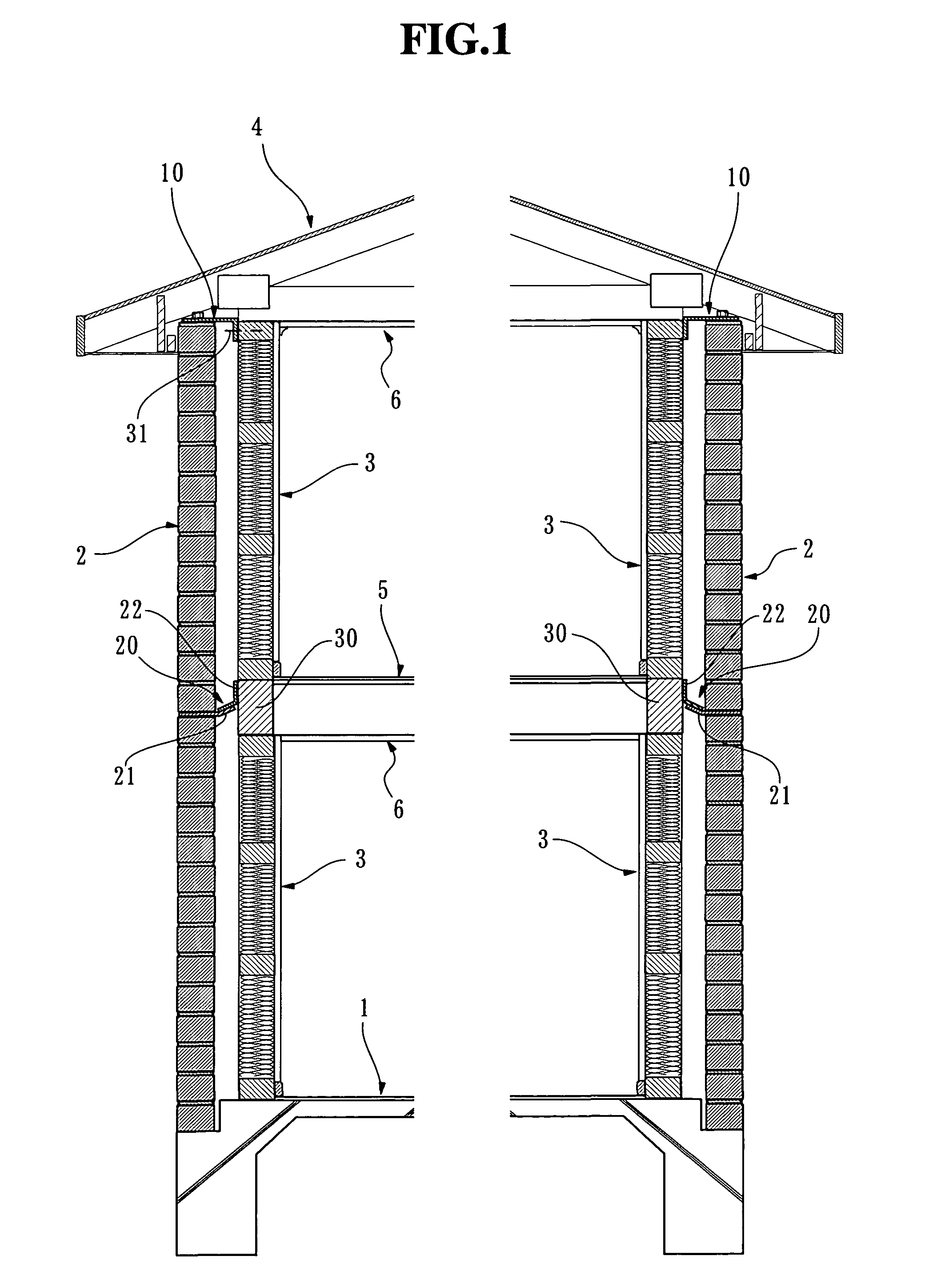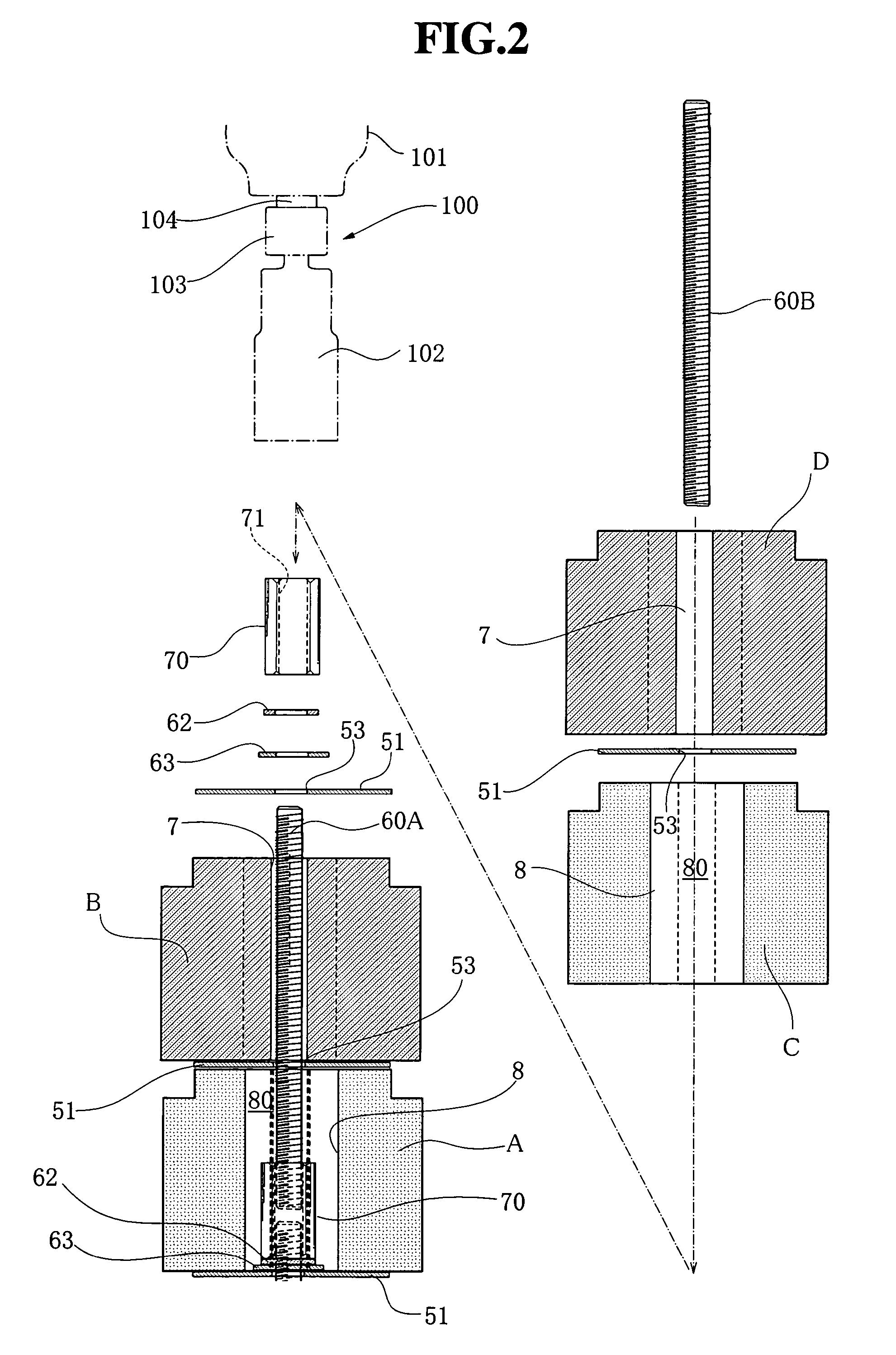Wall construction of architectural structure
a technology for building walls and structures, applied in the direction of walls, ceilings, building components, etc., can solve the problems of not being able to employ imported materials, and not being able to meet domestic standards for so as to improve earthquake resistance and wind resistance, and be able to meet the needs of construction. , the effect of improving the resistance to earthquakes
- Summary
- Abstract
- Description
- Claims
- Application Information
AI Technical Summary
Benefits of technology
Problems solved by technology
Method used
Image
Examples
Embodiment Construction
[0062]With reference to the attached drawings, a preferred embodiment of the present invention is described hereinafter.
[0063]FIG. 1 is a schematic cross-sectional view showing a house provided with brick wall constructions in accordance with the present invention.
[0064]In general, the structure is constructed from a foundation and floor slab 1, outer walls 2, inner walls 3, a roof structure 4, a second floor structure 5 and ceilings 6. The outer walls 2 are brick walls laid on the foundation and floor slab 1 in accordance with the DUP construction method. The inner walls 3 are constructed from wooden panels which are utilized in a two-by-four method for a wooden construction, and it is built up on the foundation and floor slab 1. The roof structure 4 is supported by upper ends of the inner walls 3, and roofing materials are provided on an upper surface of the roof structure 4. The load of the roof structure 4 acts on the inner walls 3 as a vertical load, the inner walls 3 being sup...
PUM
 Login to View More
Login to View More Abstract
Description
Claims
Application Information
 Login to View More
Login to View More - R&D
- Intellectual Property
- Life Sciences
- Materials
- Tech Scout
- Unparalleled Data Quality
- Higher Quality Content
- 60% Fewer Hallucinations
Browse by: Latest US Patents, China's latest patents, Technical Efficacy Thesaurus, Application Domain, Technology Topic, Popular Technical Reports.
© 2025 PatSnap. All rights reserved.Legal|Privacy policy|Modern Slavery Act Transparency Statement|Sitemap|About US| Contact US: help@patsnap.com



